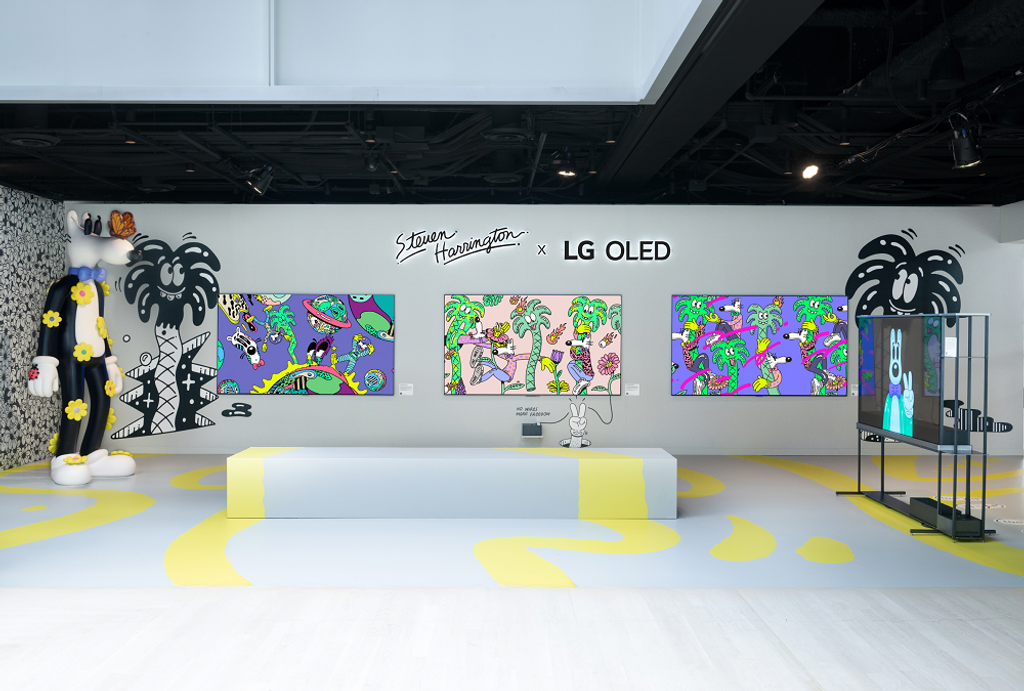- Matching (Score)
- Our verdict
- Competing TVs
- TV appearance
- Where to buy
- Contrast and black detail
- HDR effect quality
- Factory color reproduction
- Color reproduction after calibration
- Smoothness of tonal transitions
- Image scaling and smoothness of tonal transitions
- Blur and motion smoothness
- Console compatibility and gaming features
- Input lag
- Compatibility with PC
- Viewing angles
- Daytime performance
- TV features
- Apps
- Playing files from USB
- Sound
- Panel details
LG OLED G5 Review
G54 / G51 / G55 / LW / LS
Available screen sizes:

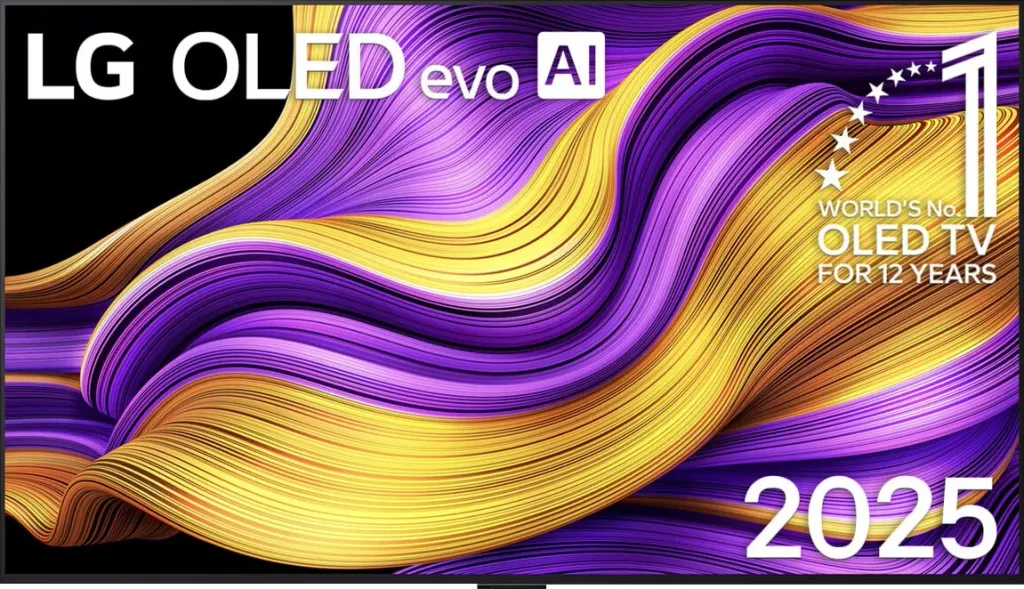
Complete the survey to find out the result
Panel type: WRGB OLED Refresh rate: 165Hz Brand: LG Resolution: 3840x2160 System: WebOS Model year: 2025
LG G5 is the successor to the very well-received model LG G4. This year, the manufacturer has opted for bold changes in its flagship model. Instead of the MLA OLED panel, the G series features a new innovation – the Tandem OLED RGB panel, a novelty in the OLED television market. Have these changes actually improved the image quality compared to its predecessor? The LG G5 carries significant responsibility – last year's model won the title of "Television of the Year" in the prestigious HDTV Shootout 2024 test. Will the G5 repeat this success? What are the actual changes compared to its predecessor? You will find out in our review.
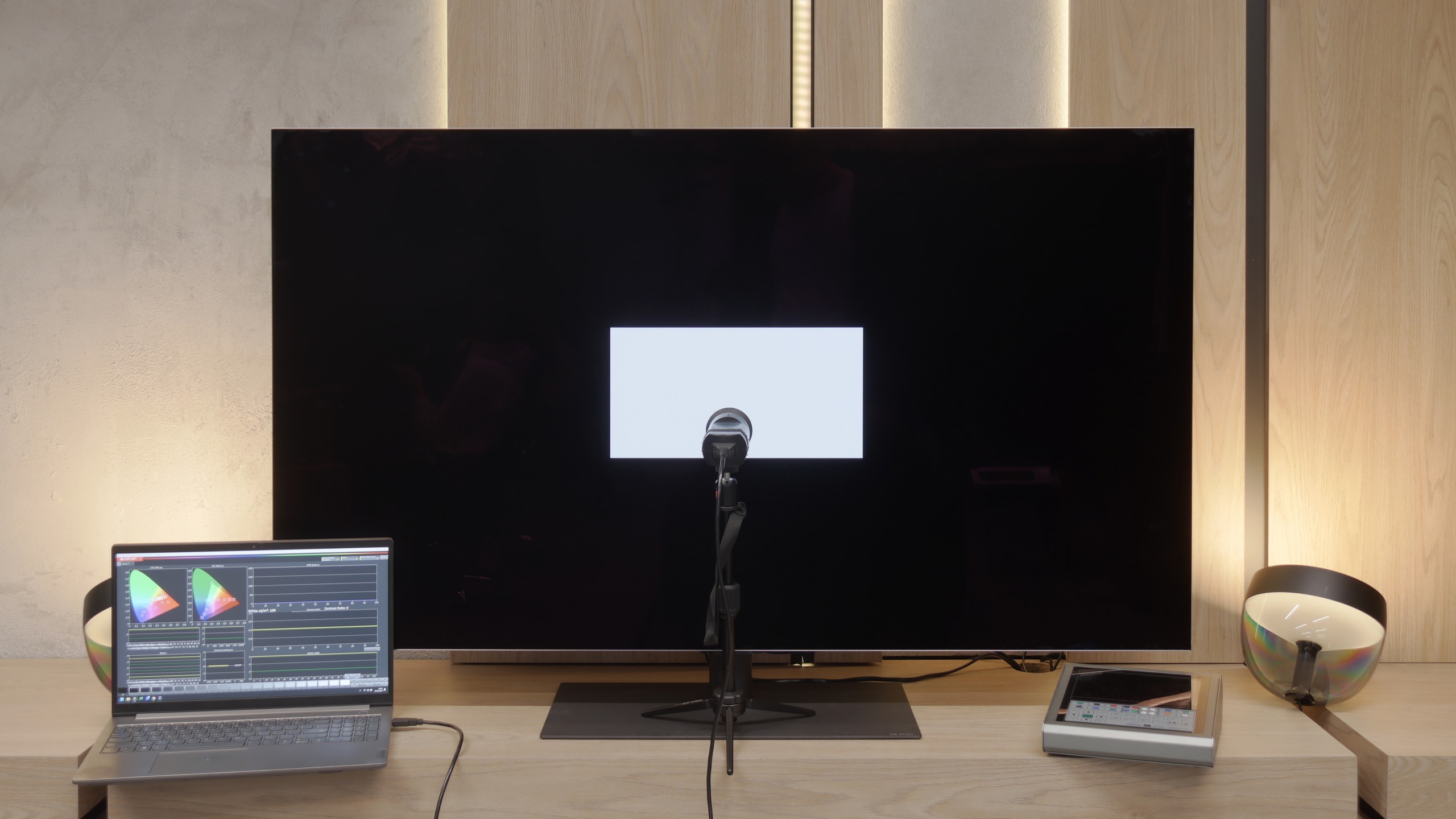
LG G5 - Our verdict
8.9
Overall rating
The LG G5 is a television that not only continues but also enhances what we loved about the previous models in the G series. Instead of following the beaten path, LG opted for a new Tandem OLED panel – and it was a resounding success. Brightness? Simply, PH E N O M E N A L. HDR effect? Close to reference. Colours after calibration? Almost perfect. Motion fluidity, low latency, and features for gamers? At an absolutely top level. The G5 performs well both in films and games, day and night, with a decoder, console, PC, or even just the remote. Of course – it is not a product without flaws. It’s a shame there is no support for DTS, viewing angles have worsened compared to its predecessor, and the remote may vary depending on the version. However, when we look at the overall picture, it is hard not to feel that this is one of the best OLED televisions available on the market, and perhaps the best. Certainly, when it comes to its versatility and image quality without having to reach for the extremely expensive models of the competition. If you are looking for a television for everything – cinema, gaming, bright living rooms, watching online content or connecting a computer – the LG G5 is a device that simply delivers on every front without compromises.
Advantages
Amazing black and contrast
Reference colour reproduction after calibration
Very high brightness in HDR materials
Excellent collaboration with consoles and computers
Great motion smoothness - OLED panel 165Hz
Many features for gamers: VRR, ALLM, HGIG, low input lag
Great operating system WebOS with many applications
Superb control thanks to the Magic remote with "pointer" function
Disadvantages
No support for DTS audio format
Worse (though still good) viewing angles than its predecessor G4
Different versions of the remote in derivative models – it's hard to predict which version we will get
Movies and series in UHD quality
9.2
Classic TV, YouTube
9.2
Sports broadcasts (TV and apps)
8.8
Gaming on console
9.5
TV as a computer monitor
8.8
Watching in bright light
8.0
Utility functions
8.5
Apps
9.1
Sound quality
8.7
Complete the survey to find out what fits your preferences
LG G5 - Competing TVs in this price range
LG G5 - TV appearance
HDMI inputs: 0 x HDMI 2.0, 4 x HDMI 2.1 (48Gbps) Other inputs: IR (remote) Outputs: Toslink (Optical audio), eARC (HDMI), ARC (HDMI) Network Interfaces: Wi-Fi 2.4GHz, Wi-Fi 5GHz, Ethernet (LAN) 100Mbps
Build quality: Super Premium
Stand type: Central
Bezel color: Silver


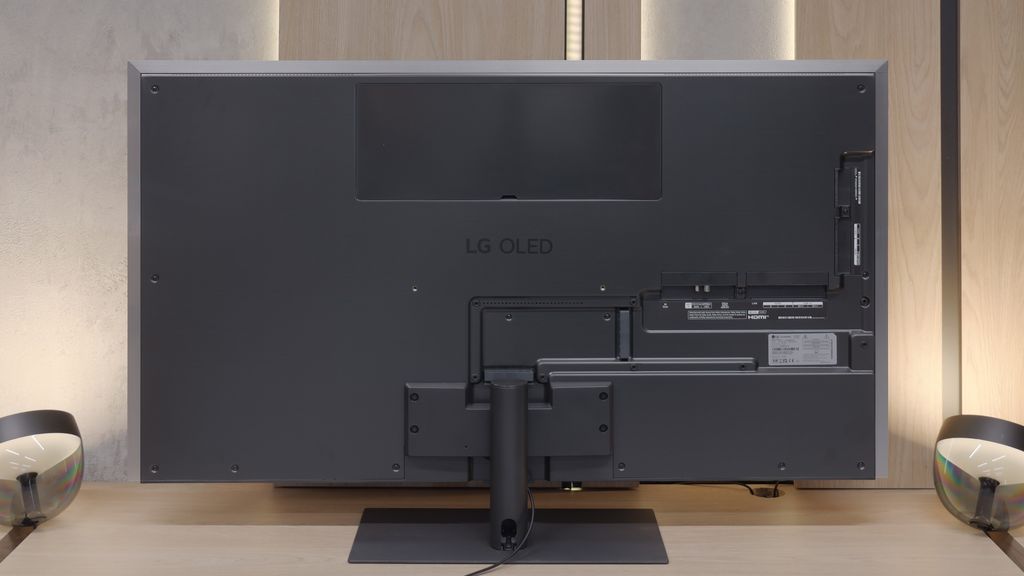
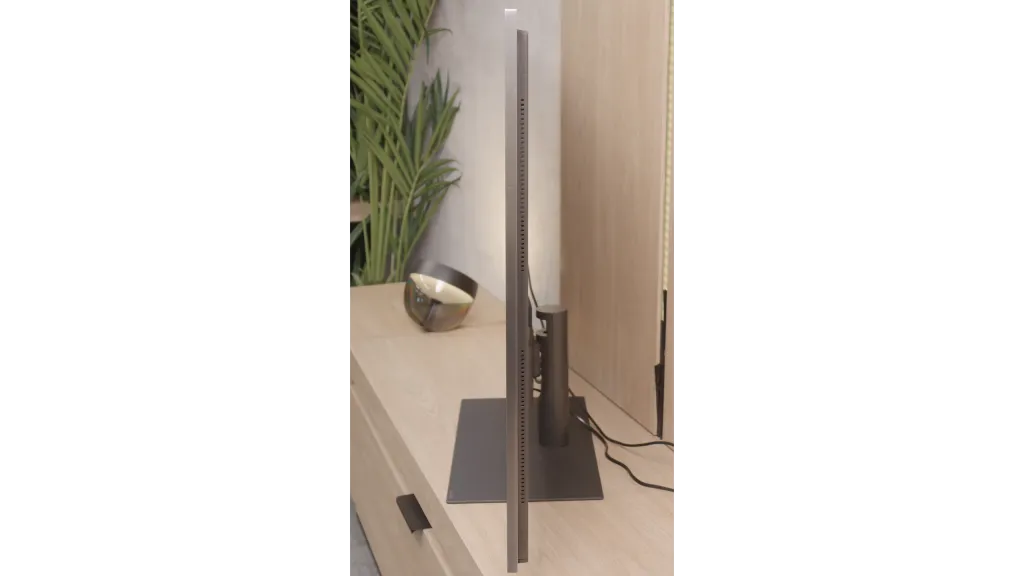
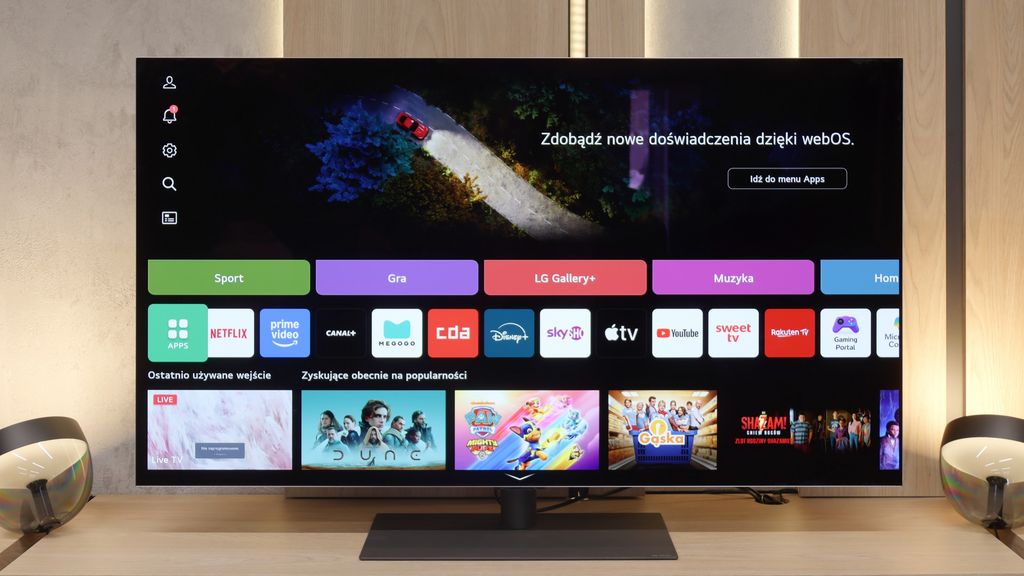
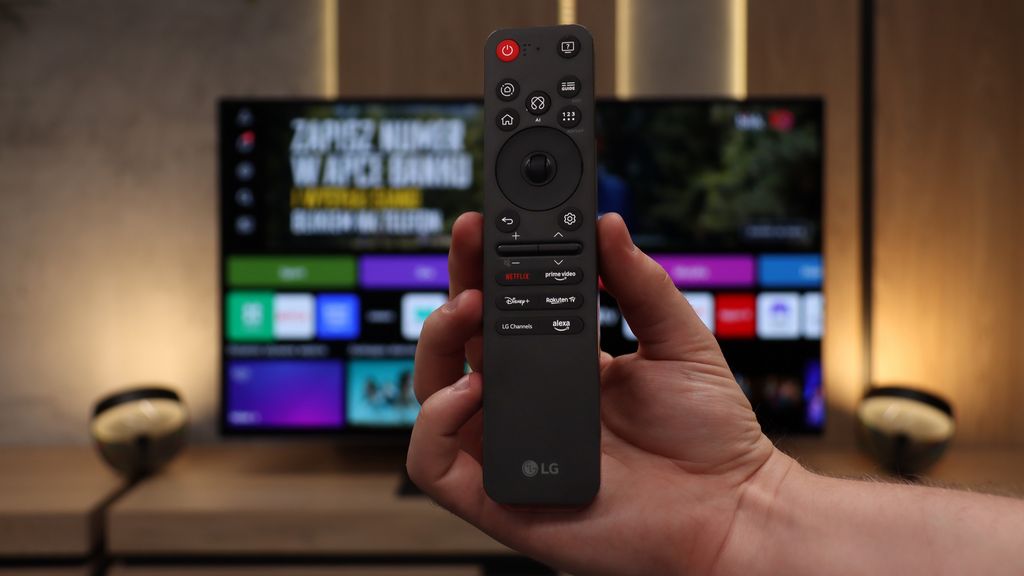

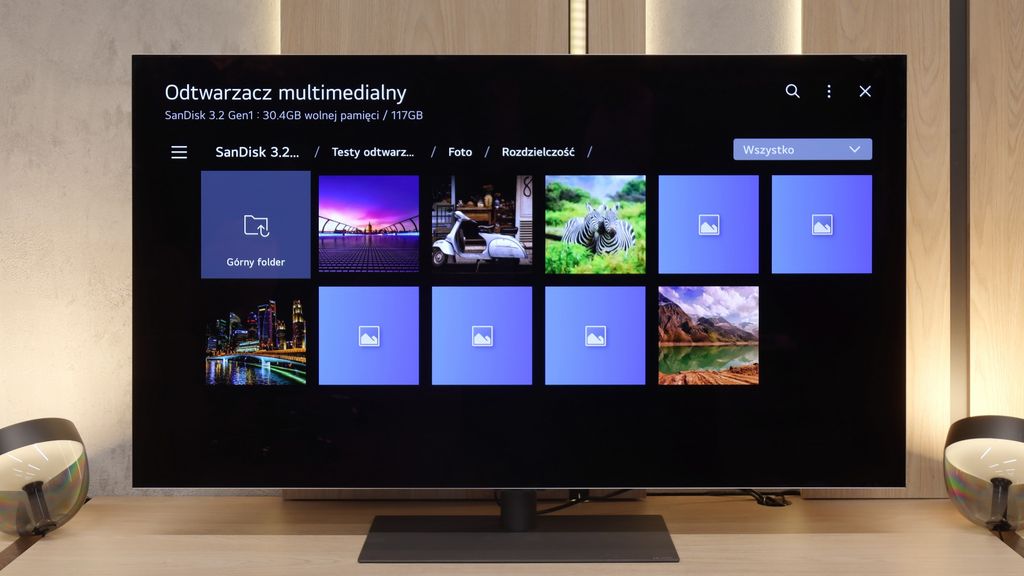
Stand: Fixed
Flat design: Yes
Accessories: Stand, Wall bracket
The LG G series has belonged to the premium category for years, so the quality of workmanship here is at the highest level. The television is equipped with an ultra-thin aluminium frame around the screen, and its monolithic design allows it to be mounted almost completely flat against the wall. In the model we tested with the ending LW, we received a "Gallery" wall mount in the set, which allows the television to be perfectly flush with the wall surface – it looks very impressive. However, if someone wishes to place the G5 on a piece of furniture for any reason, they must look for the version with the ending LS, which contains a central stand instead of the wall mount. The model with a stand, however, appears relatively rarely, so an alternative solution may be to purchase the LW version and select a universal VESA stand – the LG G5 of course supports this mounting standard. Returning to the appearance itself – it is in a class of its own. It is hard to find a better-made and equally minimalist television today. The LG G5 undoubtedly impresses at first glance and will appeal to practically everyone. (Unless someone does not like the silver colour of the frame 😉).
Buy at the best price
Select size:
LG G5 - Contrast and black detail
10/10

Result
∞:1

Result
∞:1

Result
∞:1

Result
∞:1

Result
∞:1
Visibility of details in the lights:

LG G5, as befits an OLED television, impresses with its quality of contrast and blackness. In scenes with a lot of dark areas, the screen looks almost perfect, offering deep, absolute black and infinite contrast – an effect that still cannot be achieved on any LCD television. The new Tandem OLED panel does not introduce any negative changes compared to previous generations – blacks are flawless regardless of the content. Watching scenes from films like The Revenant or Oblivion, the excellent separation of lights is clearly visible, without any halo effect or brightening of dark areas. In this category, the LG G5 deserves the highest rating.
Halo effect and black detail visibility:
LG G5 - HDR effect quality
9.1/10
Supported formats: HDR10, Dolby Vision, Dolby Vision IQ, HLG Color gamut coverage: DCI P3: 99.6%, Bt.2020: 82.5%
Luminance measurements in HDR:

Result
2346 nit

Result
2353 nit

Result
2399 nit

Result
2353 nit

Result
2012 nit
LG G5 with the new Tandem OLED matrix brings the biggest change in terms of the brightness of the television. And it's substantial. This is truly an astronomically bright OLED. In every scene tested – whether it was point lights or full-screen whites from the film The Meg – the brightness on the G5 exceeded 2000 nits. Just a year ago, such values on an OLED were simply unimaginable. And here we are – the G5 is approaching, and at times even surpassing, the best Mini-LEDs on the market. A new feature of the Tandem OLED matrix is also the expanded colour gamut – and here the LG G5 performs almost perfectly. DCI-P3 reaches a full 100%, and BT.2020 is maintained at around 83%. These are some of the highest values currently available on the market – it's hard to find any other television that comes close to such results, unless we are talking about the best displays with QD-OLED panels. The G5 has nearly reference-quality HDR – both in terms of brightness and colour saturation. This is an OLED that can truly shine – and not just figuratively.
Scene from the movie “Pan” (about 2800 nits)

Scene from the movie “Billy Lynn” (about 1100 nits)

Having such a television in the editorial office, it would be a sin not to compare it with the best screens available on the market. As with all our tests, we did this using the film Pan and Billy Lynn. And here too we were not disappointed. The fidelity to materials recorded and mastered at around 1000 nits is almost perfect. The actor in the foreground in Billy Lynn, the details on the face, the spectacularity of the fireworks – everything was rendered with immense precision. The scene from the film Pan also performed well – the sun in the distance looks almost like on a professional reference screen. Yes, there are some losses in brightness – which is perfectly understandable, as this is still an ordinary television and not a studio screen worth the price of a small flat in Warsaw – but it still makes a tremendous impression.
HDR luminance chart:
HDR luminance
Luminance of RGB colors
However, there are still scenes that OLEDs – including the LG G5 – have some issues with. These are the ones drenched in pure white. While this is a rarity, it can occur. Fortunately, dynamic metadata comes to the rescue in such moments, specifically the Dolby Vision format, which the LG G5 obviously supports. Thanks to this, the test scene with the horses appears fuller and more natural, with greater detail. And although generally, in most cases, the LG G5 will not need dynamic metadata due to its high brightness, it is good to have them on board for such scenes.
It is worth adding that the television supports the Dolby Vision IQ feature, which theoretically should adjust the picture to the brightness of the room. And although the mode called Dolby Vision IQ works rather mediocrely, a new feature in the LG G5 is an additional option available in the Filmmaker mode – in the brightness tab. When we use the Filmmaker mode and enable this function, the image begins to adapt to the lighting conditions, but without interfering with other parameters such as colour grading, gamma, or white balance. It works surprisingly effectively and actually allows you to watch content in different conditions without losing the quality that we gained after professional calibration.
Static HDR10

Dynamic: Dolby Vision

Factory color reproduction
7.8/10
Our test unit, the LG G5, struggled with certain issues in the factory Filmmaker mode. And although most people might have found the picture acceptable, we knew that this television was capable of much more. This mode had a clear excess of blue tint in the white balance, resulting in a significantly cooled image – particularly in HDR modes, where there was additionally a lack of red. The picture appeared cold, and its sharpness was artificially boosted and unnatural. Another significant issue was the brightness characteristics. In SDR content, the situation wasn't the worst, aside from a slight dimming of the entire image. However, it performed much worse in HDR materials – due to improper brightness management, the smallest details could completely disappear from the image, while larger, bright elements looked overexposed and lacking in gradation. Fortunately, the G5 supports calibration using 3D LUT (a tool for professionals for colour calibration), so we decided to make use of its professional capabilities and see what it could really do. Because although it wasn't tragic even before calibration, the potential of this television definitely deserved more.
Color reproduction after calibration
9.8/10
After performing the calibration process using professional tools, we can confidently state that the LG G5 offers nearly reference-quality image. Most of the errors related to white balance and the ColorChecker test are below a value of 2, which is a phenomenal result, practically imperceptible to the human eye. And while one could still nitpick that in HDR films the television still has a tendency to slightly dim the smallest elements of the image, in practice this does not negatively affect the overall impression. Kudos to LG, as once again they provide the user with enormous possibilities for adjusting their display – and this, combined with the very good parameters of the panel itself, results in an image that is truly hard to beat.


LG G5 - Smoothness of tonal transitions
8.5/10
The fluidity of tonal transitions in the LG G5 is a notable step forward compared to last year's model. Not only has brightness been improved, but also the method of blending colours, which the G4 sometimes struggled with. In the vast majority of scenes, the G5 has no issues with tonal transitions – there is no visible banding typical of WOLED technology, nor are there unsightly breaks between colours. Of course, in very dark areas of the image and with shades of grey, minor imperfections can still be noticed, but these are things that the average viewer would not even register. In short – it is really good.








Image scaling and smoothness of tonal transitions
8.7/10
Smooth transition function
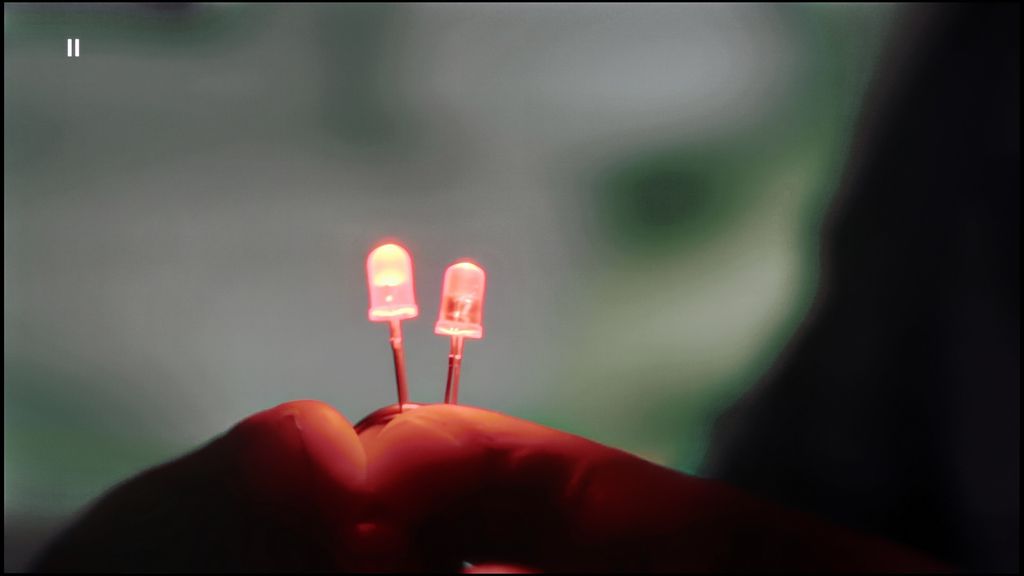
Image without overscan on the SD signal

Upscaling and digital image processing in the LG G5 are quite impressive. The television handles lower quality content very well, especially when the "Smooth Gradation" feature is set to a low level. In this mode, it effectively removes unwanted artifacts and issues with visible tonal transitions. It may also slightly smooth out some desirable details, such as the subtle texture of clothing or skin, but importantly – it does not remove film grain, so it's difficult to speak of a serious compromise here. This is one of those options that is definitely worth enabling.
The G5 also performs well with upscaling, which improves the quality of older materials. The test image with the model looked really solid – slight jaggedness was visible, but that's an effect that cannot be completely avoided. Additionally, there were no problems with overscan, which – contrary to appearances – is not at all obvious, even in 2025.
LG G5 - Blur and motion smoothness
8.5/10
Maximum refresh rate of the panel: 165Hz
Film motion smoothing option: Yes
Blur reduction option: Yes
BFI function 60Hz: Yes, 60Hz (image flickers)
Brightness drop with BFI: 42%
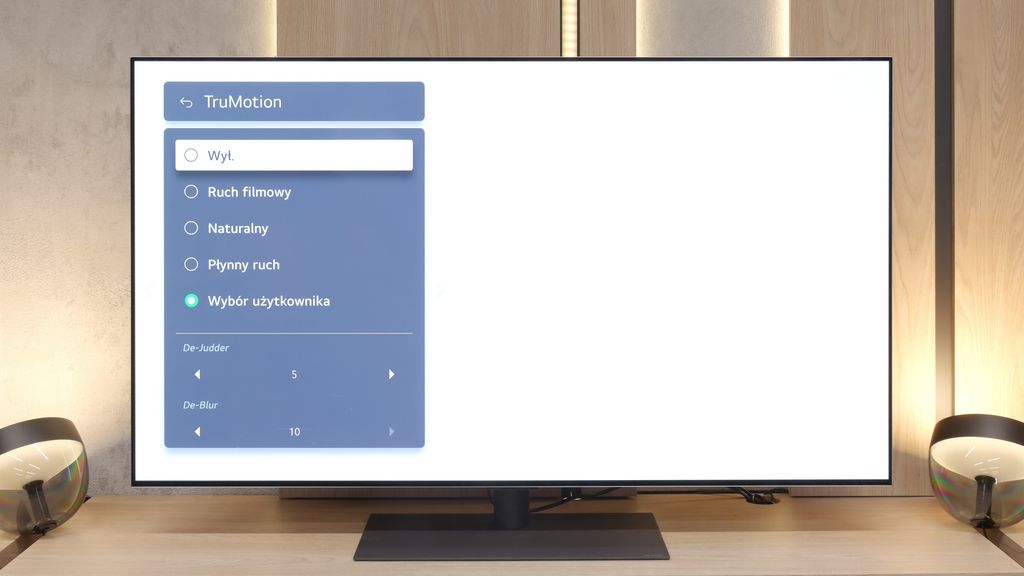
The motion smoothness on the LG G5 is simply phenomenal. The television is equipped with a 165 Hz refresh rate panel, and this, combined with the instant response time of the OLED matrix, delivers incredible results. The image does not tear or stutter like on traditional LCD televisions. Like most LG models, the G5 is equipped with a motion smoother, which can be useful when watching films – we are, of course, referring to the TruMotion mode. With the "De-Blur" and "De-Judder" sliders, we can adjust the smoothness of older materials according to our own preferences, whether we want to maintain the characteristic film stuttering or lean towards a more fluid, television-like effect.
Blur (native resolution, maximum refresh rate):



Blur (BFI function enabled):
Image flickers in this mode



Smużenie (4K 165Hz):



Smearing? Essentially, this does not occur here, as we are talking about OLED, which is unmatched in this regard. Regardless of whether we set the G5 to console mode at 120 Hz or computer mode at 165 Hz – our "little green man" from the motion test was perfectly visible. If someone really wanted the image to seem even "faster," they could use the BFI feature, which inserts black frames. In our opinion, however, this doesn't make much sense – the image then begins to flicker, which can strain the eyes, and additionally, the brightness drops quite noticeably. Since everything looks almost perfect without this feature, there is no reason to compromise comfort for speed.
LG G5 - Console compatibility and gaming features
10/10
ALLM: Yes
VRR: Yes
VRR range: 40 - 165Hz
Dolby Vision Game Mode: Yes
Correct implementation of HGIG: Yes
1080p@120Hz: Yes
1440p@120Hz: Yes
4K@120Hz: Yes
Game bar: Yes
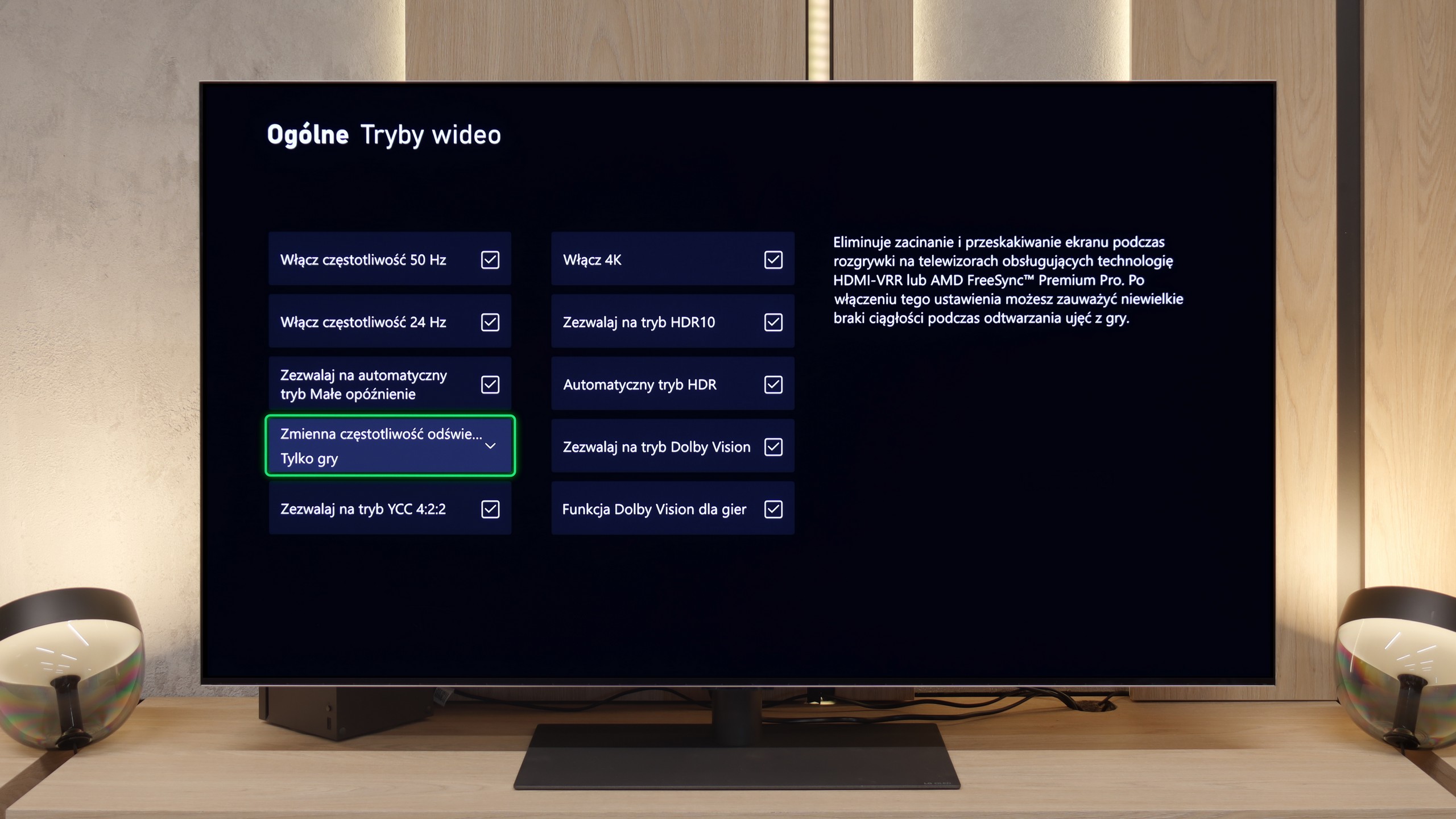
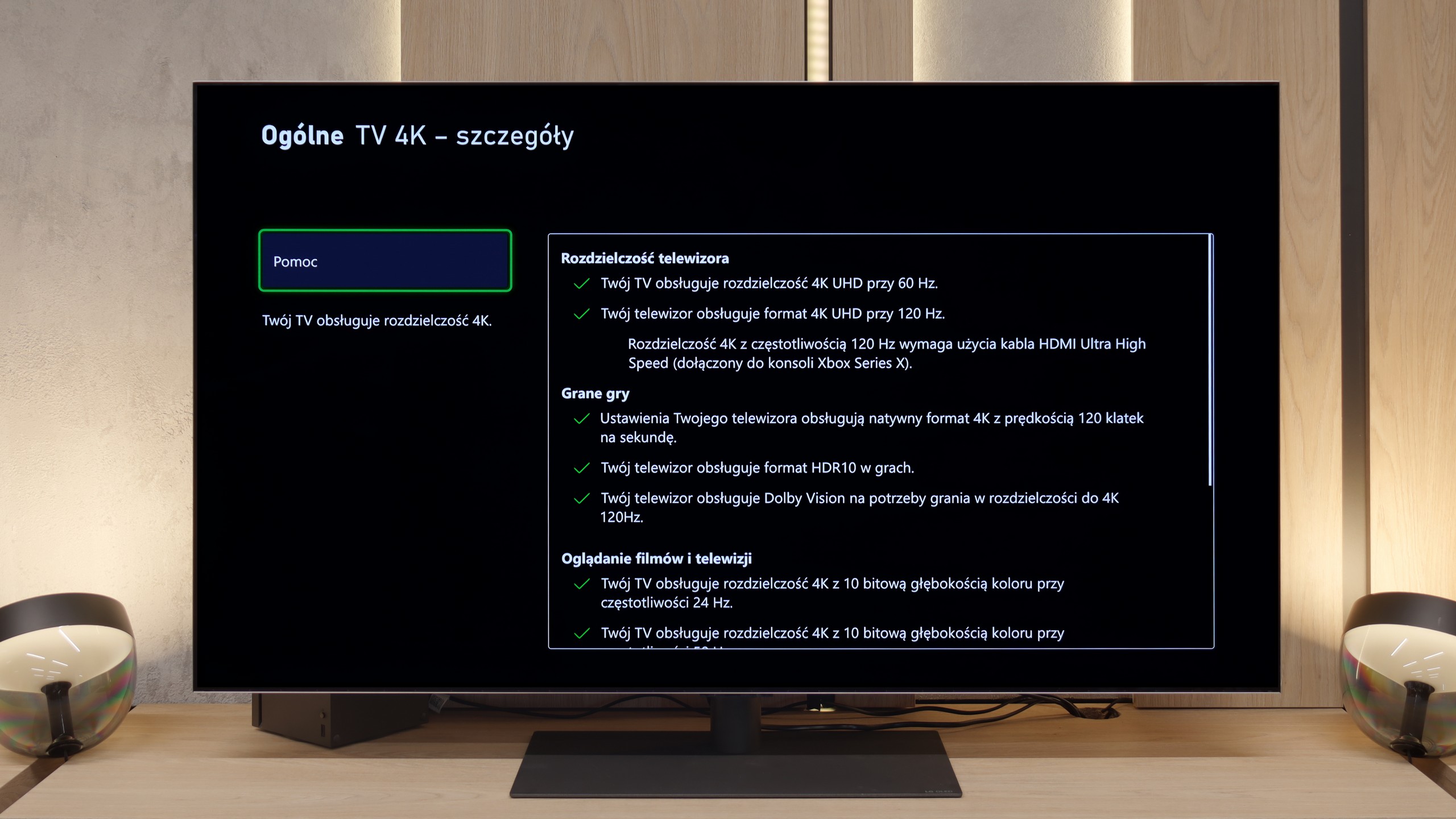
Features for gamers? Perfect. That should be sufficient for you to know what level we are dealing with here. The G5 is a television designed with gamers in mind, so we will find literally everything you could expect from a gaming screen. There is a Game Bar, there is support for high resolutions with high refresh rates – that is, 4K at 120 Hz, and even more, as the panel has a refresh rate of 165 Hz (which PC gamers will benefit from). The television supports variable refresh rate (VRR), automatic low latency mode (ALLM), and also correctly handles HDR in games thanks to the HGiG function. All of this adds up to one of the best sets of gaming features available on the market. Well done, LG.
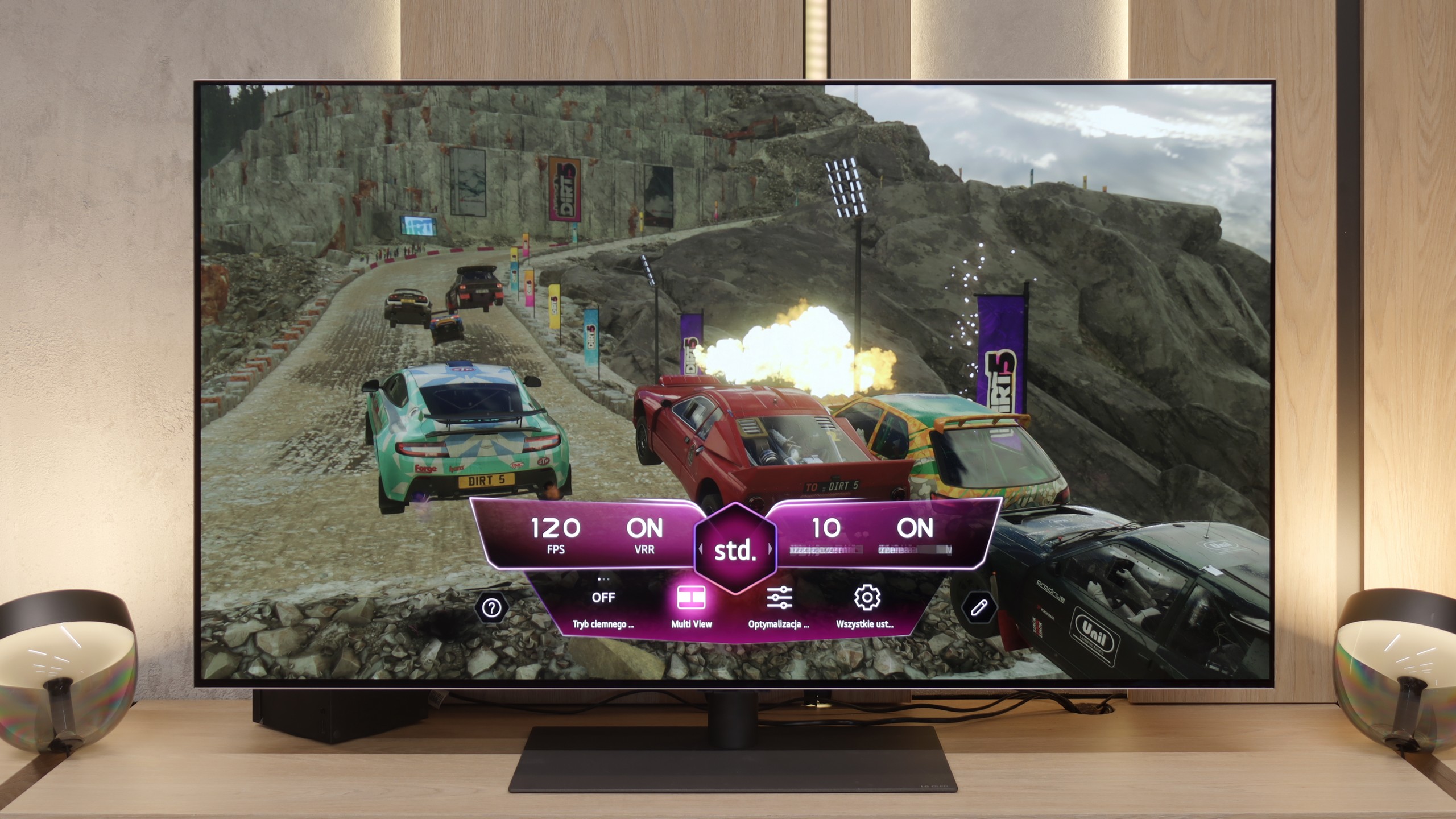
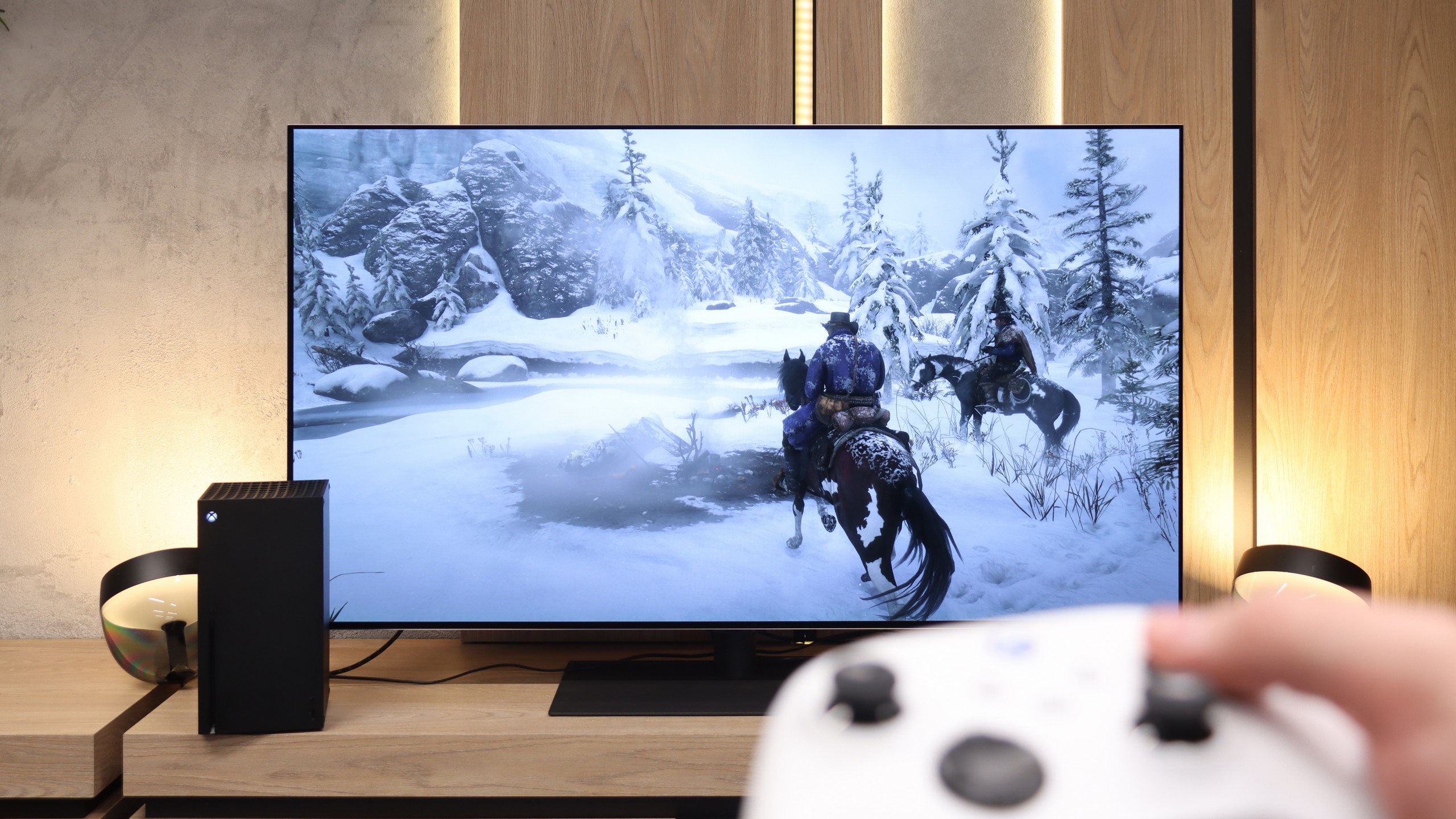

LG G5 - Input lag
9.9/10
The input lag on the LG G5 is incredibly low. The reaction time to our actions – whether we're playing with a controller, keyboard, or mouse – is almost perfect. The controls are instantaneous, and the game responds exactly when we expect it to. The Dolby Vision Gaming mode does introduce slightly higher latencies, but even then it's hard to nitpick – in the worst case, the values hover around 20 ms, which for most gamers will be practically unnoticeable.
| SDR | HDR | Dolby Vision |
|---|---|---|
| 1080p60: 9 ms | 2160p60: 9 ms | 2160p60 DV: 22 ms |
| 1080p120: 5 ms | 2160p120: 5 ms | 2160p120 DV: 13 ms |
| 2160p60: 9 ms | ||
| 2160p120: 5 ms |

LG G5 - Compatibility with PC
8.8/10
Chroma 444 (maximum resolution and refresh rate): Yes
Font clarity: Good
Readability of dark text and shapes: Very Good
Input lag in PC mode (4K, maximum refresh rate): 5ms
Max refresh rate: 165Hz
G-Sync: Yes
Collaboration with a PC? Nearly perfect. The television, as we mentioned earlier, has fantastic features for gamers – including those using a PC. Onboard, we find full G-Sync certification, a 165 Hz panel, and a super-fast input lag of around 5 ms. Thanks to the correct implementation of chroma 4:4:4, fonts are very easy to read – both the smallest and the largest. Although due to the WRGB subpixel layout, there may be slight shadows around the characters, for most users this effect will be virtually unnoticeable. The G5 excels as a screen for work, entertainment, and gaming – also from a computer.
LG G5 - Viewing angles
7.5/10
Brightness drop at an angle of 45 degrees: 38%
The viewing angles on the LG G5 are very good, mainly due to the use of a WOLED panel. It's hard to find fault here – the image does not significantly lose brightness or quality even when viewed from the side. However, it should be fairly noted that there is a slight regression compared to the G4 model. The predecessor used an MLA panel with micro-lenses, which offered slightly better light distribution. Also, compared to QD-OLED panels, the angles are worse. Nevertheless, the overall perception of the image at an angle remains very good and should not be an issue in everyday use.
LG G5 - Daytime performance
8/10
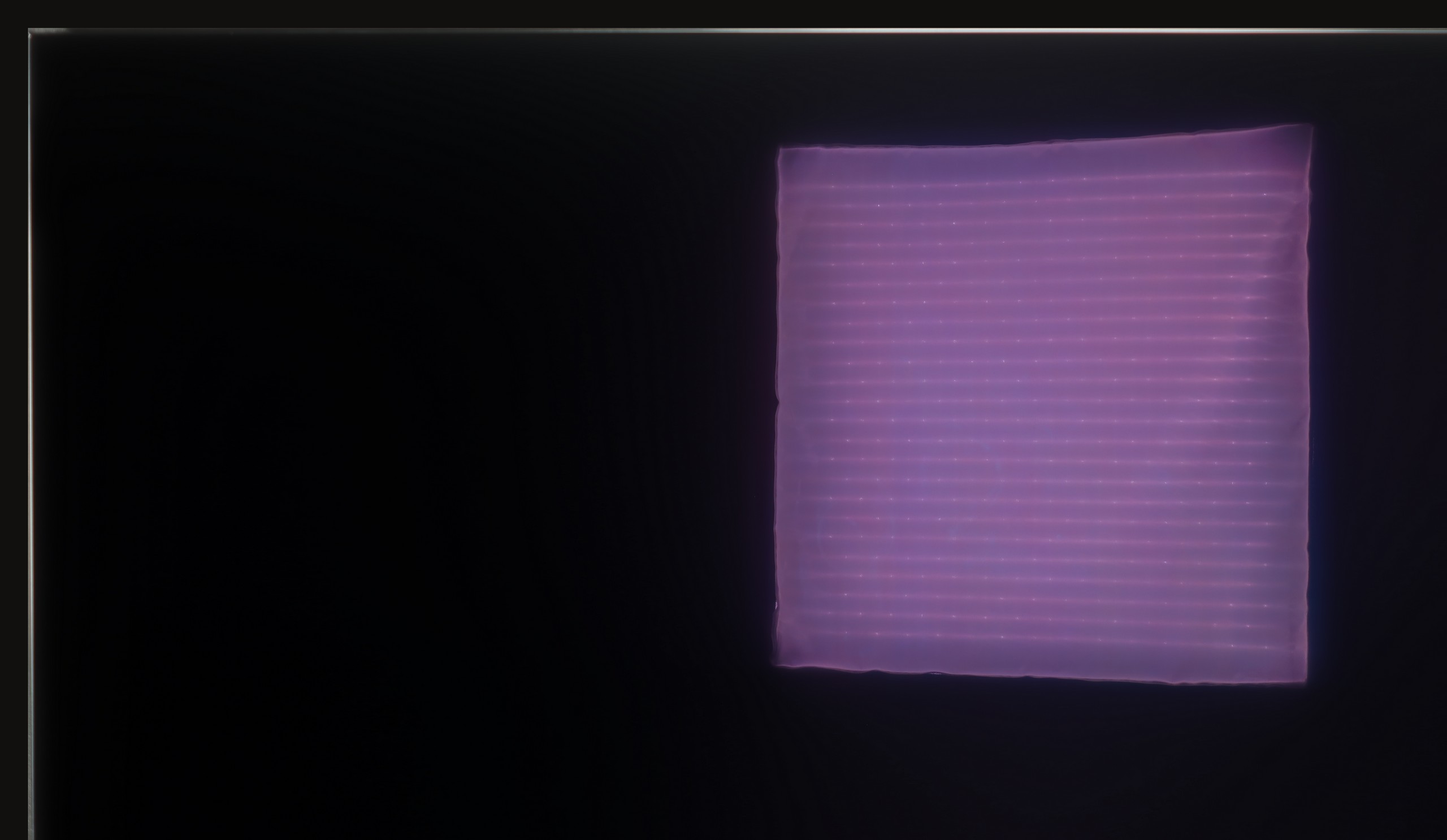

Panel finish: Glare
Reflection suppression: Decent
Black levels during daytime: Very Good
The LG G5, thanks to its very high brightness, performs excellently in bright rooms. Even with SDR content, the average brightness value is around 800 nits, which is significantly more than in standard televisions. It will handle a bright living room with ease. Although the panel averages moderate reflection suppression, it still maintains significantly better blacks and colours during the day than QD-OLED panels or those with a matte finish. The G5 will perform well in very sunny rooms – unless you truly cannot stand reflections on the screen. In that case, you will need to use blinds or consider purchasing a television with a matte panel.
Panel brightness
Average luminance SDR
LG OLED G5: 810 cd/m2
LG G5 - TV features
8.5/10
System: WebOS
System performance: Very good
- HDMI inputs: 0 x HDMI 2.0, 4 x HDMI 2.1 48Gbps
- Other inputs: IR (remote)
- Outputs: Toslink (Optical audio), eARC (HDMI), ARC (HDMI)
- Network Interfaces: Wi-Fi 2.4GHz, Wi-Fi 5GHz, Ethernet (LAN) 100Mbps
- TV reception: DVB-T, DVB-T2, DVB-S, DVB-S2, DVB-C
Classic features:
Recording to USB (terrestrial TV): Yes
Recording programming: Yes
Picture in Picture (PiP): No
RF remote control (no need to aim at the screen): RF
Backlit remote control: No
Teletext: Yes
Audio only mode: Yes
Bluetooth headphones support: Yes
Simultaneous Bluetooth headphones & TV audio: Yes
Smart features:
AirPlay: Yes
Screen mirroring (Windows Miracast): Yes
Voice search: Yes
Voice search in native language: Yes
Ability to connect a keyboard and mouse: Yes






Classic features
LG G5 has a lot to offer when it comes to classic television features. Aside from the inability to watch two sources (PIP), the television handles everyday usage excellently. There are no issues connecting external Bluetooth devices, such as headphones, and the EPG interface is very clear and understandable – even for those who are not particularly tech-savvy.
Smart TV Features
The Smart TV in the G5 operates on the WebOS system – it is the heart and brain of the entire television. With the Magic remote, using the G5 is truly enjoyable. We control the cursor on the screen with wrist movements, which somewhat resembles using a mouse in the air. The system itself is highly developed and offers everything one could expect: AirPlay, screen mirroring, voice search, and voice commands – all of this works smoothly and without delays. Without a doubt, it is one of the best operating systems in televisions on the market.
Note:
During our tests, we had virtually nothing to complain about – perhaps with one exception: the confusion surrounding the remote. Depending on the market and the specific version of the model, you may encounter the new, minimalist Magic remote (without a numeric keypad) or the older version with a full set of buttons. We tested the G54LW model, which came with the new Magic remote, but it's hard to say how the situation looks in other variants. It may be a similar situation to the LG C5 series, where the addition of the remote also depends on the specific market.
Sound connection options
HDMI audio:
Other audio outputs:
Toslink: Yes
Wireless audio:
Bluetooth: Yes
Obsługiwane formaty audio:
Dolby Digital Plus 7.1: Yes
Dolby True HD 7.1: No
Dolby Atmos in Dolby Digital Plus (JOC): Yes
Dolby Atmos in Dolby True HD: No
DTS:X in DTS-HD MA: No
DTS-HD Master Audio: No
Ułatwienia dla seniorów
Numeric keyboard on TV: No
Font size adjustment: No
Audio description: Yes
LG G5 - Apps
9.1/10























LG G5 - Playing files from USB
9/10

| Maximum photo resolution: | Supported photo formats: |
|---|---|
The built-in media player in the LG G5 is really very good. It supports practically everything you might expect from a modern television – most popular formats work without any issues, and the app's performance is swift. Our only disappointment was the lack of support for very high bitrate HEVC 85 Mbit/s files – similar to the C5 and B5 models. Interestingly, the same file played flawlessly on last year's LG OLEDs, so it's hard to say what has caused this change. Nevertheless, in everyday use, the G5 will handle the vast majority of content without the need to connect any external devices for media playback.
LG G5 - Sound
8.7/10
84dB
Maximum volume
Supported codecs
(TV speakers)
Dolby Digital Plus 7.1
Dolby True HD 7.1
Dolby Atmos in Dolby Digital Plus (JOC)
Dolby Atmos in Dolby True HD
DTS:X in DTS-HD MA
DTS-HD Master Audio
The sound on the LG G5, considering its slim profile, is truly phenomenal. When listening to music, one can feel a light, pleasant bass, and in films, the dialogue is clear and audible – it does not get lost even in dynamic scenes. Unfortunately, a certain disappointment is the lack of support for the DTS format, which LG used in its older models. It’s a shame, as many home cinema enthusiasts may feel this as a step backwards.
Acoustic Measurements
84dBC (Max)
75dBC
LG G5 - Panel details
Software version during testing: 33.20.67
Panel uniformity and thermal imaging:

Founder and originator of the "ChooseTV" portal

Journalist, reviewer, and columnist for the "ChooseTV" portal
See articles related to LG OLED G5:
6/20/2025
4/3/2025










